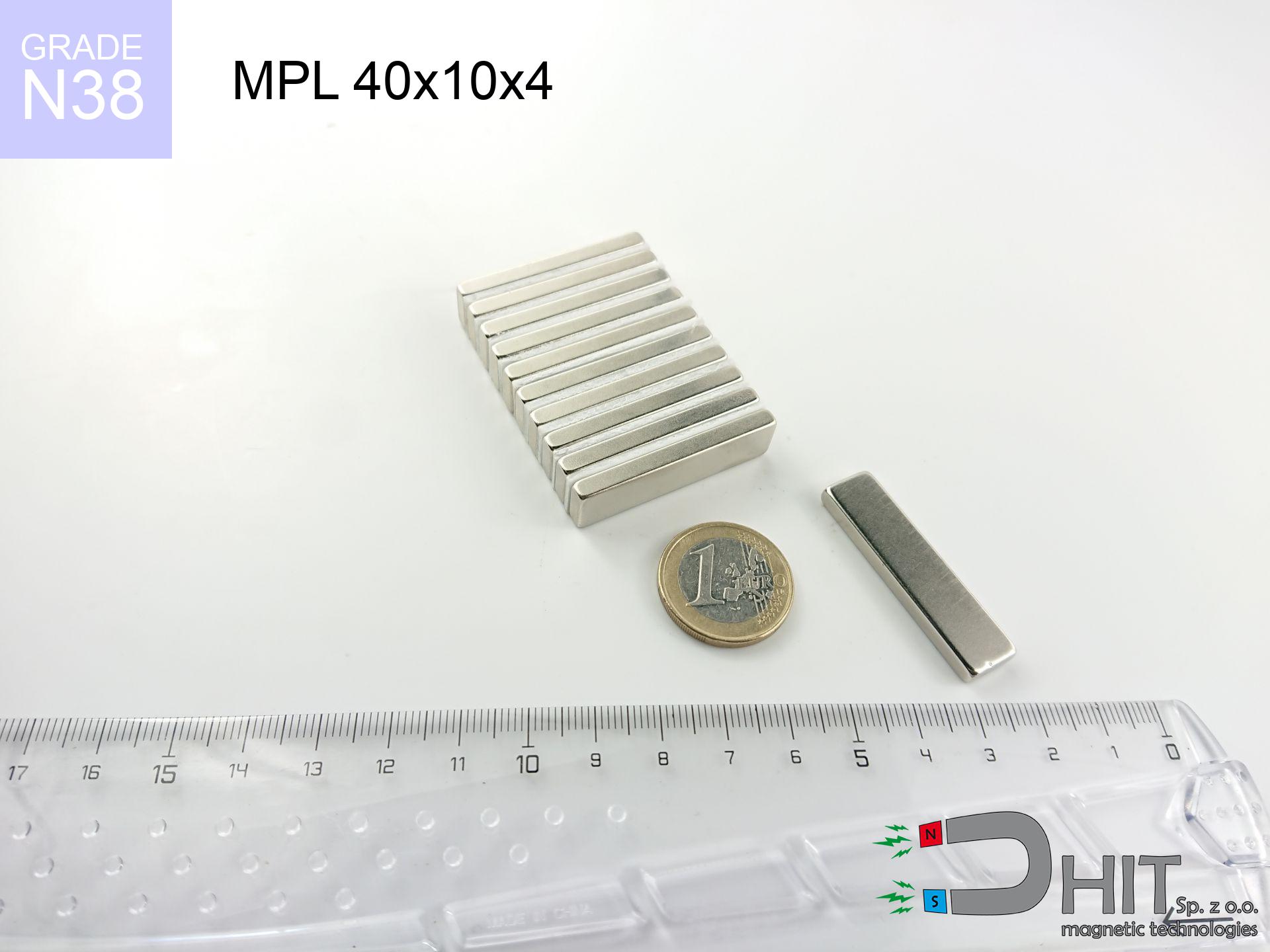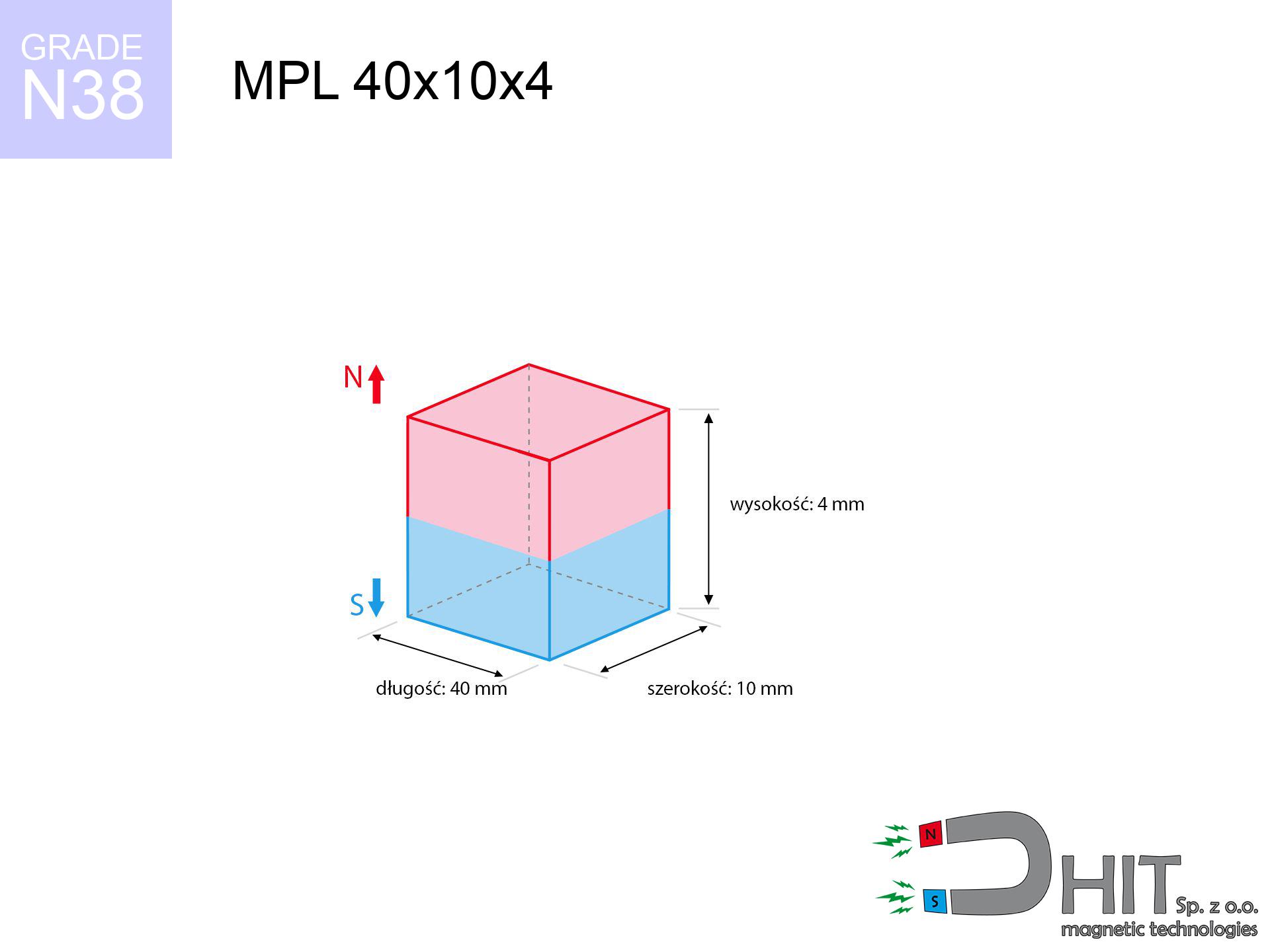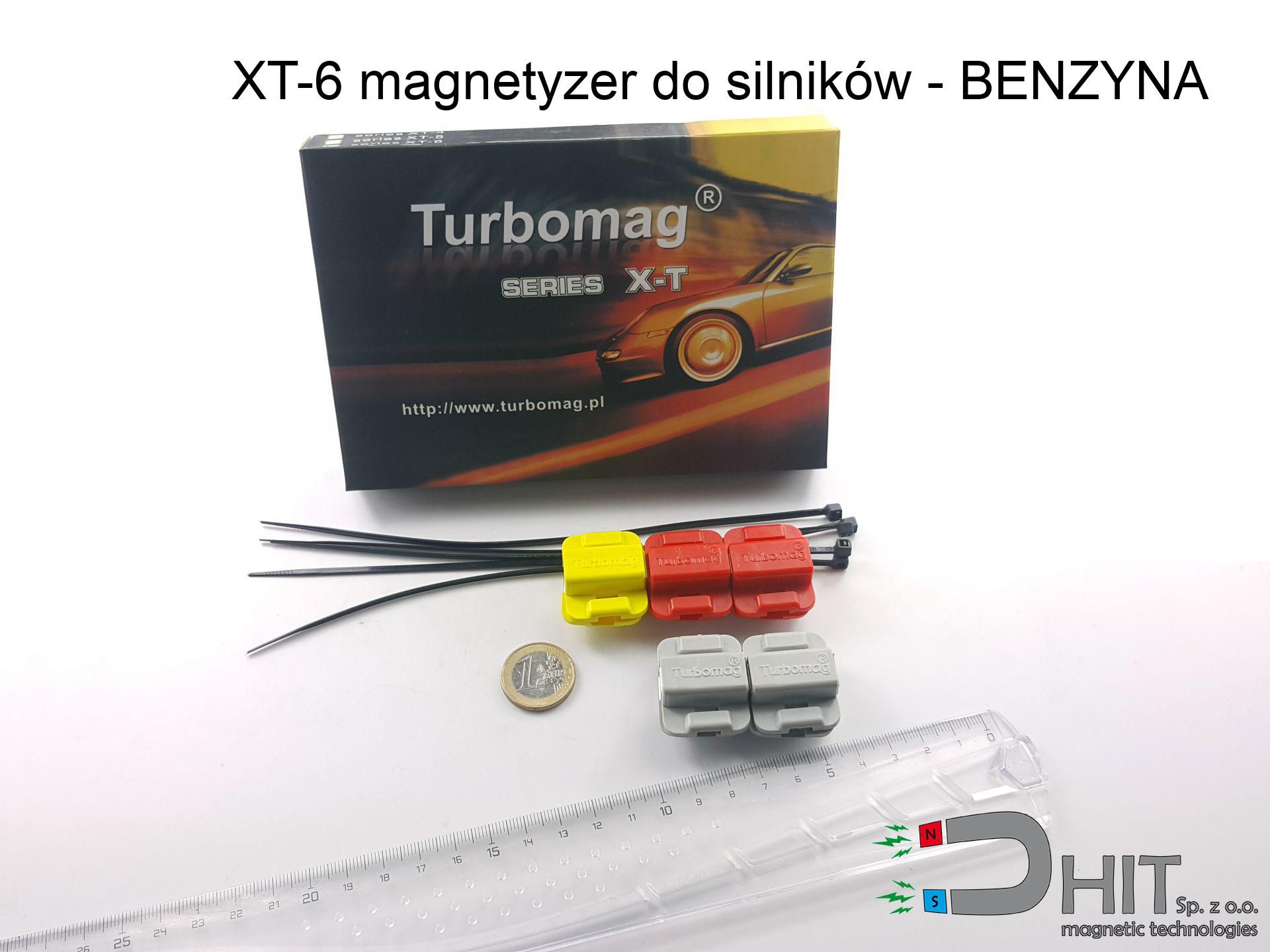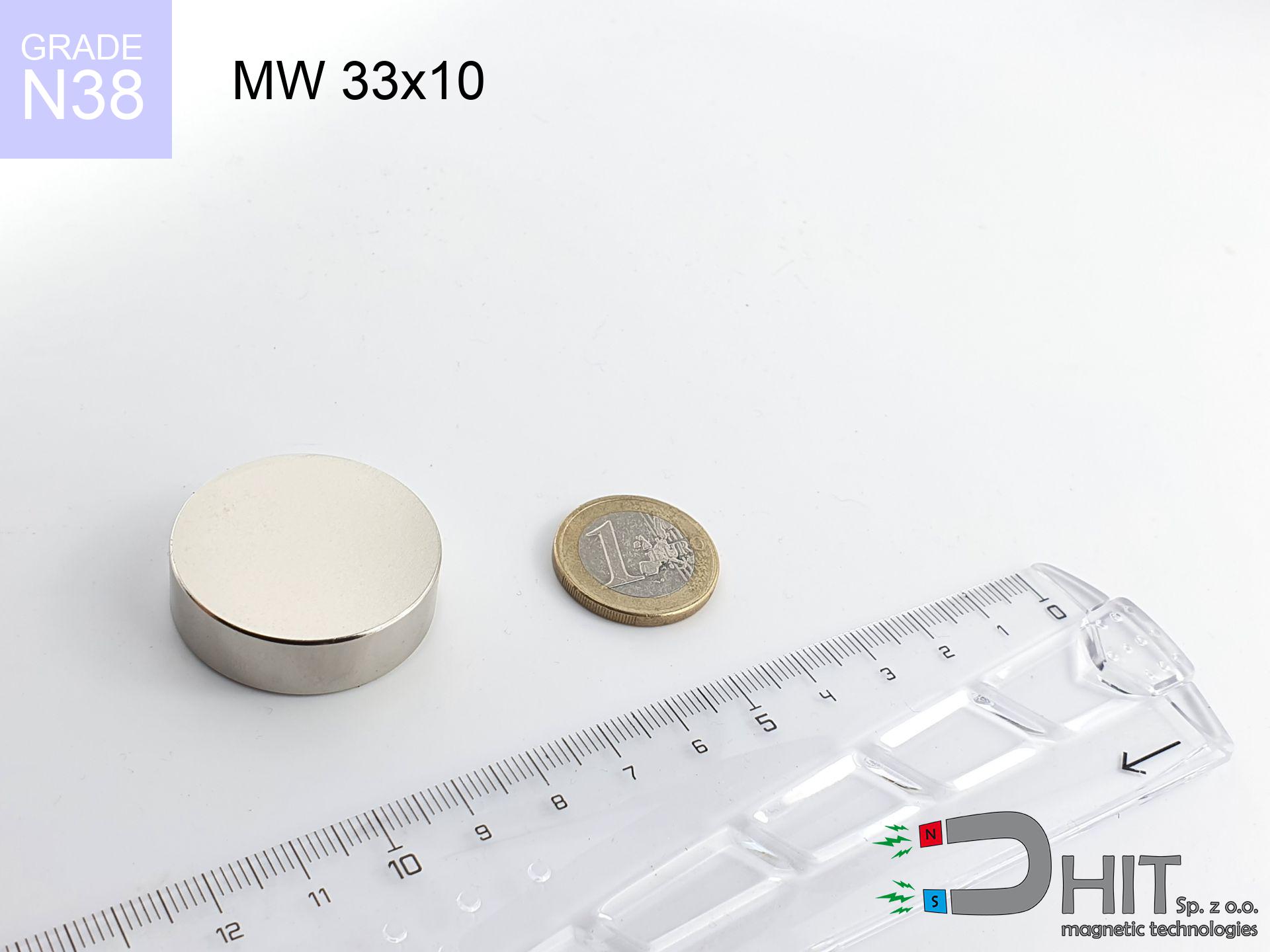MPL 40x10x4 / N38 - lamellar magnet
lamellar magnet
Catalog no 020150
GTIN/EAN: 5906301811565
length
40 mm [±0,1 mm]
Width
10 mm [±0,1 mm]
Height
4 mm [±0,1 mm]
Weight
12 g
Magnetization Direction
↑ axial
Load capacity
9.31 kg / 91.33 N
Magnetic Induction
275.57 mT / 2756 Gs
Coating
[NiCuNi] Nickel
4.87 ZŁ with VAT / pcs + price for transport
3.96 ZŁ net + 23% VAT / pcs
bulk discounts:
Need more?
Call us now
+48 22 499 98 98
otherwise get in touch using
inquiry form
the contact section.
Lifting power as well as appearance of a magnet can be estimated on our
online calculation tool.
Orders placed before 14:00 will be shipped the same business day.
Technical data - MPL 40x10x4 / N38 - lamellar magnet
Specification / characteristics - MPL 40x10x4 / N38 - lamellar magnet
| properties | values |
|---|---|
| Cat. no. | 020150 |
| GTIN/EAN | 5906301811565 |
| Production/Distribution | Dhit sp. z o.o. |
| Country of origin | Poland / China / Germany |
| Customs code | 85059029 |
| length | 40 mm [±0,1 mm] |
| Width | 10 mm [±0,1 mm] |
| Height | 4 mm [±0,1 mm] |
| Weight | 12 g |
| Magnetization Direction | ↑ axial |
| Load capacity ~ ? | 9.31 kg / 91.33 N |
| Magnetic Induction ~ ? | 275.57 mT / 2756 Gs |
| Coating | [NiCuNi] Nickel |
| Manufacturing Tolerance | ±0.1 mm |
Magnetic properties of material N38
| properties | values | units |
|---|---|---|
| remenance Br [min. - max.] ? | 12.2-12.6 | kGs |
| remenance Br [min. - max.] ? | 1220-1260 | mT |
| coercivity bHc ? | 10.8-11.5 | kOe |
| coercivity bHc ? | 860-915 | kA/m |
| actual internal force iHc | ≥ 12 | kOe |
| actual internal force iHc | ≥ 955 | kA/m |
| energy density [min. - max.] ? | 36-38 | BH max MGOe |
| energy density [min. - max.] ? | 287-303 | BH max KJ/m |
| max. temperature ? | ≤ 80 | °C |
Physical properties of sintered neodymium magnets Nd2Fe14B at 20°C
| properties | values | units |
|---|---|---|
| Vickers hardness | ≥550 | Hv |
| Density | ≥7.4 | g/cm3 |
| Curie Temperature TC | 312 - 380 | °C |
| Curie Temperature TF | 593 - 716 | °F |
| Specific resistance | 150 | μΩ⋅cm |
| Bending strength | 250 | MPa |
| Compressive strength | 1000~1100 | MPa |
| Thermal expansion parallel (∥) to orientation (M) | (3-4) x 10-6 | °C-1 |
| Thermal expansion perpendicular (⊥) to orientation (M) | -(1-3) x 10-6 | °C-1 |
| Young's modulus | 1.7 x 104 | kg/mm² |
Technical analysis of the product - technical parameters
These data are the direct effect of a physical calculation. Values were calculated on algorithms for the class Nd2Fe14B. Operational conditions might slightly differ from theoretical values. Use these data as a supplementary guide for designers.
Table 1: Static pull force (force vs gap) - interaction chart
MPL 40x10x4 / N38
| Distance (mm) | Induction (Gauss) / mT | Pull Force (kg/lbs/g/N) | Risk Status |
|---|---|---|---|
| 0 mm |
2755 Gs
275.5 mT
|
9.31 kg / 20.53 pounds
9310.0 g / 91.3 N
|
strong |
| 1 mm |
2413 Gs
241.3 mT
|
7.14 kg / 15.75 pounds
7143.1 g / 70.1 N
|
strong |
| 2 mm |
2044 Gs
204.4 mT
|
5.13 kg / 11.31 pounds
5128.9 g / 50.3 N
|
strong |
| 3 mm |
1703 Gs
170.3 mT
|
3.56 kg / 7.85 pounds
3559.5 g / 34.9 N
|
strong |
| 5 mm |
1173 Gs
117.3 mT
|
1.69 kg / 3.72 pounds
1688.2 g / 16.6 N
|
safe |
| 10 mm |
522 Gs
52.2 mT
|
0.33 kg / 0.74 pounds
334.9 g / 3.3 N
|
safe |
| 15 mm |
277 Gs
27.7 mT
|
0.09 kg / 0.21 pounds
94.2 g / 0.9 N
|
safe |
| 20 mm |
163 Gs
16.3 mT
|
0.03 kg / 0.07 pounds
32.8 g / 0.3 N
|
safe |
| 30 mm |
69 Gs
6.9 mT
|
0.01 kg / 0.01 pounds
5.8 g / 0.1 N
|
safe |
| 50 mm |
19 Gs
1.9 mT
|
0.00 kg / 0.00 pounds
0.5 g / 0.0 N
|
safe |
Table 2: Shear force (wall)
MPL 40x10x4 / N38
| Distance (mm) | Friction coefficient | Pull Force (kg/lbs/g/N) |
|---|---|---|
| 0 mm | Stal (~0.2) |
1.86 kg / 4.11 pounds
1862.0 g / 18.3 N
|
| 1 mm | Stal (~0.2) |
1.43 kg / 3.15 pounds
1428.0 g / 14.0 N
|
| 2 mm | Stal (~0.2) |
1.03 kg / 2.26 pounds
1026.0 g / 10.1 N
|
| 3 mm | Stal (~0.2) |
0.71 kg / 1.57 pounds
712.0 g / 7.0 N
|
| 5 mm | Stal (~0.2) |
0.34 kg / 0.75 pounds
338.0 g / 3.3 N
|
| 10 mm | Stal (~0.2) |
0.07 kg / 0.15 pounds
66.0 g / 0.6 N
|
| 15 mm | Stal (~0.2) |
0.02 kg / 0.04 pounds
18.0 g / 0.2 N
|
| 20 mm | Stal (~0.2) |
0.01 kg / 0.01 pounds
6.0 g / 0.1 N
|
| 30 mm | Stal (~0.2) |
0.00 kg / 0.00 pounds
2.0 g / 0.0 N
|
| 50 mm | Stal (~0.2) |
0.00 kg / 0.00 pounds
0.0 g / 0.0 N
|
Table 3: Wall mounting (shearing) - behavior on slippery surfaces
MPL 40x10x4 / N38
| Surface type | Friction coefficient / % Mocy | Max load (kg/lbs/g/N) |
|---|---|---|
| Raw steel |
µ = 0.3
30% Nominalnej Siły
|
2.79 kg / 6.16 pounds
2793.0 g / 27.4 N
|
| Painted steel (standard) |
µ = 0.2
20% Nominalnej Siły
|
1.86 kg / 4.11 pounds
1862.0 g / 18.3 N
|
| Oily/slippery steel |
µ = 0.1
10% Nominalnej Siły
|
0.93 kg / 2.05 pounds
931.0 g / 9.1 N
|
| Magnet with anti-slip rubber |
µ = 0.5
50% Nominalnej Siły
|
4.66 kg / 10.26 pounds
4655.0 g / 45.7 N
|
Table 4: Material efficiency (saturation) - power losses
MPL 40x10x4 / N38
| Steel thickness (mm) | % power | Real pull force (kg/lbs/g/N) |
|---|---|---|
| 0.5 mm |
|
0.93 kg / 2.05 pounds
931.0 g / 9.1 N
|
| 1 mm |
|
2.33 kg / 5.13 pounds
2327.5 g / 22.8 N
|
| 2 mm |
|
4.66 kg / 10.26 pounds
4655.0 g / 45.7 N
|
| 3 mm |
|
6.98 kg / 15.39 pounds
6982.5 g / 68.5 N
|
| 5 mm |
|
9.31 kg / 20.53 pounds
9310.0 g / 91.3 N
|
| 10 mm |
|
9.31 kg / 20.53 pounds
9310.0 g / 91.3 N
|
| 11 mm |
|
9.31 kg / 20.53 pounds
9310.0 g / 91.3 N
|
| 12 mm |
|
9.31 kg / 20.53 pounds
9310.0 g / 91.3 N
|
Table 5: Working in heat (material behavior) - resistance threshold
MPL 40x10x4 / N38
| Ambient temp. (°C) | Power loss | Remaining pull (kg/lbs/g/N) | Status |
|---|---|---|---|
| 20 °C | 0.0% |
9.31 kg / 20.53 pounds
9310.0 g / 91.3 N
|
OK |
| 40 °C | -2.2% |
9.11 kg / 20.07 pounds
9105.2 g / 89.3 N
|
OK |
| 60 °C | -4.4% |
8.90 kg / 19.62 pounds
8900.4 g / 87.3 N
|
|
| 80 °C | -6.6% |
8.70 kg / 19.17 pounds
8695.5 g / 85.3 N
|
|
| 100 °C | -28.8% |
6.63 kg / 14.61 pounds
6628.7 g / 65.0 N
|
Table 6: Magnet-Magnet interaction (attraction) - forces in the system
MPL 40x10x4 / N38
| Gap (mm) | Attraction (kg/lbs) (N-S) | Shear Strength (kg/lbs/g/N) | Repulsion (kg/lbs) (N-N) |
|---|---|---|---|
| 0 mm |
18.71 kg / 41.25 pounds
4 164 Gs
|
2.81 kg / 6.19 pounds
2807 g / 27.5 N
|
N/A |
| 1 mm |
16.57 kg / 36.53 pounds
5 185 Gs
|
2.49 kg / 5.48 pounds
2486 g / 24.4 N
|
14.91 kg / 32.88 pounds
~0 Gs
|
| 2 mm |
14.36 kg / 31.65 pounds
4 826 Gs
|
2.15 kg / 4.75 pounds
2153 g / 21.1 N
|
12.92 kg / 28.48 pounds
~0 Gs
|
| 3 mm |
12.24 kg / 26.98 pounds
4 455 Gs
|
1.84 kg / 4.05 pounds
1836 g / 18.0 N
|
11.01 kg / 24.28 pounds
~0 Gs
|
| 5 mm |
8.61 kg / 18.98 pounds
3 737 Gs
|
1.29 kg / 2.85 pounds
1291 g / 12.7 N
|
7.75 kg / 17.08 pounds
~0 Gs
|
| 10 mm |
3.39 kg / 7.48 pounds
2 346 Gs
|
0.51 kg / 1.12 pounds
509 g / 5.0 N
|
3.05 kg / 6.73 pounds
~0 Gs
|
| 20 mm |
0.67 kg / 1.48 pounds
1 045 Gs
|
0.10 kg / 0.22 pounds
101 g / 1.0 N
|
0.61 kg / 1.34 pounds
~0 Gs
|
| 50 mm |
0.03 kg / 0.06 pounds
207 Gs
|
0.00 kg / 0.01 pounds
4 g / 0.0 N
|
0.02 kg / 0.05 pounds
~0 Gs
|
| 60 mm |
0.01 kg / 0.03 pounds
138 Gs
|
0.00 kg / 0.00 pounds
2 g / 0.0 N
|
0.01 kg / 0.02 pounds
~0 Gs
|
| 70 mm |
0.01 kg / 0.01 pounds
96 Gs
|
0.00 kg / 0.00 pounds
1 g / 0.0 N
|
0.00 kg / 0.00 pounds
~0 Gs
|
| 80 mm |
0.00 kg / 0.01 pounds
69 Gs
|
0.00 kg / 0.00 pounds
0 g / 0.0 N
|
0.00 kg / 0.00 pounds
~0 Gs
|
| 90 mm |
0.00 kg / 0.00 pounds
51 Gs
|
0.00 kg / 0.00 pounds
0 g / 0.0 N
|
0.00 kg / 0.00 pounds
~0 Gs
|
| 100 mm |
0.00 kg / 0.00 pounds
39 Gs
|
0.00 kg / 0.00 pounds
0 g / 0.0 N
|
0.00 kg / 0.00 pounds
~0 Gs
|
Table 7: Protective zones (electronics) - warnings
MPL 40x10x4 / N38
| Object / Device | Limit (Gauss) / mT | Safe distance |
|---|---|---|
| Pacemaker | 5 Gs (0.5 mT) | 8.5 cm |
| Hearing aid | 10 Gs (1.0 mT) | 6.5 cm |
| Timepiece | 20 Gs (2.0 mT) | 5.0 cm |
| Phone / Smartphone | 40 Gs (4.0 mT) | 4.0 cm |
| Remote | 50 Gs (5.0 mT) | 3.5 cm |
| Payment card | 400 Gs (40.0 mT) | 1.5 cm |
| HDD hard drive | 600 Gs (60.0 mT) | 1.0 cm |
Table 8: Collisions (kinetic energy) - warning
MPL 40x10x4 / N38
| Start from (mm) | Speed (km/h) | Energy (J) | Predicted outcome |
|---|---|---|---|
| 10 mm |
28.72 km/h
(7.98 m/s)
|
0.38 J | |
| 30 mm |
48.67 km/h
(13.52 m/s)
|
1.10 J | |
| 50 mm |
62.82 km/h
(17.45 m/s)
|
1.83 J | |
| 100 mm |
88.83 km/h
(24.68 m/s)
|
3.65 J |
Table 9: Corrosion resistance
MPL 40x10x4 / N38
| Technical parameter | Value / Description |
|---|---|
| Coating type | [NiCuNi] Nickel |
| Layer structure | Nickel - Copper - Nickel |
| Layer thickness | 10-20 µm |
| Salt spray test (SST) ? | 24 h |
| Recommended environment | Indoors only (dry) |
Table 10: Electrical data (Flux)
MPL 40x10x4 / N38
| Parameter | Value | SI Unit / Description |
|---|---|---|
| Magnetic Flux | 9 840 Mx | 98.4 µWb |
| Pc Coefficient | 0.26 | Low (Flat) |
Table 11: Submerged application
MPL 40x10x4 / N38
| Environment | Effective steel pull | Effect |
|---|---|---|
| Air (land) | 9.31 kg | Standard |
| Water (riverbed) |
10.66 kg
(+1.35 kg buoyancy gain)
|
+14.5% |
1. Wall mount (shear)
*Caution: On a vertical wall, the magnet holds only a fraction of its max power.
2. Steel saturation
*Thin metal sheet (e.g. computer case) significantly reduces the holding force.
3. Thermal stability
*For standard magnets, the critical limit is 80°C.
4. Demagnetization curve and operating point (B-H)
chart generated for the permeance coefficient Pc (Permeance Coefficient) = 0.26
The chart above illustrates the magnetic characteristics of the material within the second quadrant of the hysteresis loop. The solid red line represents the demagnetization curve (material potential), while the dashed blue line is the load line based on the magnet's geometry. The Pc (Permeance Coefficient), also known as the load line slope, is a dimensionless value that describes the relationship between the magnet's shape and its magnetic stability. The intersection of these two lines (the black dot) is the operating point — it determines the actual magnetic flux density generated by the magnet in this specific configuration. A higher Pc value means the magnet is more 'slender' (tall relative to its area), resulting in a higher operating point and better resistance to irreversible demagnetization caused by external fields or temperature. A value of 0.42 is relatively low (typical for flat magnets), meaning the operating point is closer to the 'knee' of the curve — caution is advised when operating at temperatures near the maximum limit to avoid strength loss.
Elemental analysis
| iron (Fe) | 64% – 68% |
| neodymium (Nd) | 29% – 32% |
| boron (B) | 1.1% – 1.2% |
| dysprosium (Dy) | 0.5% – 2.0% |
| coating (Ni-Cu-Ni) | < 0.05% |
Ecology and recycling (GPSR)
| recyclability (EoL) | 100% |
| recycled raw materials | ~10% (pre-cons) |
| carbon footprint | low / zredukowany |
| waste code (EWC) | 16 02 16 |
Other offers
Pros and cons of neodymium magnets.
Benefits
- They virtually do not lose strength, because even after ten years the performance loss is only ~1% (based on calculations),
- They have excellent resistance to magnetism drop as a result of external magnetic sources,
- By applying a smooth layer of silver, the element presents an modern look,
- Magnets are characterized by extremely high magnetic induction on the working surface,
- Due to their durability and thermal resistance, neodymium magnets can operate (depending on the form) even at high temperatures reaching 230°C or more...
- Possibility of individual creating as well as adjusting to atypical needs,
- Significant place in advanced technology sectors – they are utilized in data components, drive modules, precision medical tools, and multitasking production systems.
- Relatively small size with high pulling force – neodymium magnets offer strong magnetic field in small dimensions, which enables their usage in small systems
Limitations
- At very strong impacts they can crack, therefore we advise placing them in strong housings. A metal housing provides additional protection against damage, as well as increases the magnet's durability.
- Neodymium magnets decrease their force under the influence of heating. As soon as 80°C is exceeded, many of them start losing their power. Therefore, we recommend our special magnets marked [AH], which maintain stability even at temperatures up to 230°C
- When exposed to humidity, magnets start to rust. For applications outside, it is recommended to use protective magnets, such as magnets in rubber or plastics, which secure oxidation as well as corrosion.
- Limited ability of making nuts in the magnet and complicated forms - recommended is casing - magnetic holder.
- Possible danger resulting from small fragments of magnets pose a threat, when accidentally swallowed, which gains importance in the context of child health protection. Additionally, small components of these products can be problematic in diagnostics medical when they are in the body.
- High unit price – neodymium magnets are more expensive than other types of magnets (e.g. ferrite), which hinders application in large quantities
Lifting parameters
Breakaway strength of the magnet in ideal conditions – what contributes to it?
- with the use of a yoke made of special test steel, ensuring maximum field concentration
- whose thickness equals approx. 10 mm
- with a surface perfectly flat
- with zero gap (no impurities)
- during detachment in a direction perpendicular to the plane
- in stable room temperature
Impact of factors on magnetic holding capacity in practice
- Distance – existence of foreign body (rust, dirt, gap) interrupts the magnetic circuit, which reduces capacity steeply (even by 50% at 0.5 mm).
- Loading method – catalog parameter refers to detachment vertically. When attempting to slide, the magnet exhibits much less (typically approx. 20-30% of maximum force).
- Substrate thickness – for full efficiency, the steel must be sufficiently thick. Paper-thin metal limits the lifting capacity (the magnet "punches through" it).
- Steel type – low-carbon steel gives the best results. Higher carbon content lower magnetic properties and lifting capacity.
- Base smoothness – the more even the surface, the larger the contact zone and higher the lifting capacity. Unevenness acts like micro-gaps.
- Temperature – heating the magnet causes a temporary drop of force. Check the thermal limit for a given model.
Lifting capacity was assessed by applying a steel plate with a smooth surface of suitable thickness (min. 20 mm), under vertically applied force, in contrast under shearing force the holding force is lower. Additionally, even a small distance between the magnet and the plate reduces the load capacity.
Warnings
Demagnetization risk
Standard neodymium magnets (grade N) undergo demagnetization when the temperature exceeds 80°C. This process is irreversible.
Mechanical processing
Fire hazard: Rare earth powder is explosive. Avoid machining magnets in home conditions as this may cause fire.
Do not underestimate power
Exercise caution. Neodymium magnets attract from a distance and connect with massive power, often quicker than you can move away.
Electronic devices
Powerful magnetic fields can destroy records on credit cards, HDDs, and other magnetic media. Stay away of min. 10 cm.
This is not a toy
Adult use only. Small elements pose a choking risk, leading to serious injuries. Store away from kids and pets.
Fragile material
NdFeB magnets are sintered ceramics, meaning they are fragile like glass. Collision of two magnets leads to them breaking into shards.
Pinching danger
Large magnets can smash fingers in a fraction of a second. Do not put your hand betwixt two strong magnets.
Precision electronics
Remember: neodymium magnets produce a field that interferes with precision electronics. Maintain a separation from your mobile, tablet, and navigation systems.
Health Danger
Individuals with a heart stimulator should maintain an large gap from magnets. The magnetism can stop the functioning of the life-saving device.
Avoid contact if allergic
Allergy Notice: The Ni-Cu-Ni coating contains nickel. If redness happens, immediately stop working with magnets and wear gloves.









